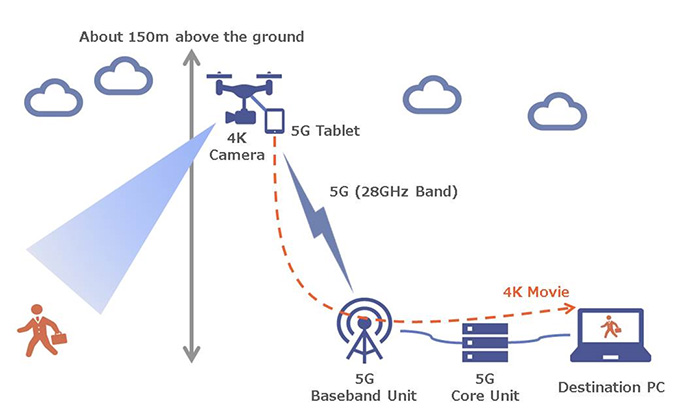Drones (also known as UAVs or Unmanned Aerial Vehicles) are gaining the ground in different areas. Their production has reached 3 million units in 2017, achieving therefore 39% more than in 2016. Gartner analysts estimate that the drone market revenue has reached $6 billion in 2017 and is expected to exceed $11.2 billion by 2020. This clearly shows the success that drones are achieving in both personal and commercial sectors. Packet delivery, crowd surveillance, and traffic monitoring are some applications, to name few. Recently, UAVs have demonstrated many potentials in providing services related to the Internet of Things (IoT). When equipped with the dedicated devices (e.g. sensors, cameras), they can be oriented to a specific area and perform the measurements requested by users.

The industrial community is pushing the use of cellular networks as a communication infrastructure for drones. Indeed, as consequence of the limited range of their underlying communication technology (e.g. Telemetry radio, WiFi, etc.), the usage of drones is nowadays more restricted to visual line-of-sight scenarios. This goes against the potential applications expected from drones, where they are supposed to travel far from their control center (e.g. for cargo delivery). One of the most important benefits from considering mobile networks for UAVs is the achievement of beyond visual line-of-sight, in which communication between the drones and the controller goes via the cellular network. In addition, drones will also benefit from the efficiency of mobile networks. Through the current Long-Term Evolution (LTE) and the upcoming 5G networks, UAVs would achieve zero-delay and higher throughput, which are very crucial given the critical nature of drone applications. The usage of mobile networks has become the future direction for Unmanned Aerial Vehicles.
Different companies have shown great interest in mobile network-based drones. The Japanese telecommunication firm, KDDI has conducted several works in this field. Together with terra-drone, the two companies have developed a management system that controls drones via LTE network. KDDI’s 4G LTE network is used as a communication infrastructure, while ‘Terra UTM’ is employed for the management.
KDDI also conducted, in cooperation with Nakao Research Laboratory of the University of Tokyo, TripodWorks and Prodrone, a live 4K video transmission test using a drone that leverages 5G technology. The demo showed a successful transmission of the 4K resolution video, opening the horizon for many potential applications in public safety and surveillance, agriculture monitoring and disaster response.


Ericsson has also conducted several works on mobile network-based drones. In 2016, Ericsson and China Mobile have partnered to conduct a prototype field trial on 5G-enabled drone . Given the zero-delay requirement that characterizes drones, they provide an important use case for 5G networks in which part of a network can be distributed and dynamically deployed at the cellular edge in order to reduce end-to-end latency.
Ericsson has also conducted works on how mobile networks can support drone communication , such as using the mobile positioning system for drone traffic management.
Nokia demonstrated the potential of combining LTE technology with drone applications. Their developed solution for public safety, Nokia saving lives , can ensure high-speed network connectivity, while drone-borne cameras captured footage from disaster locations in real time.
